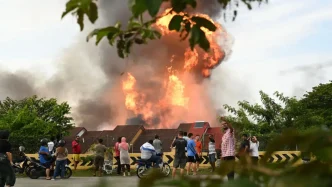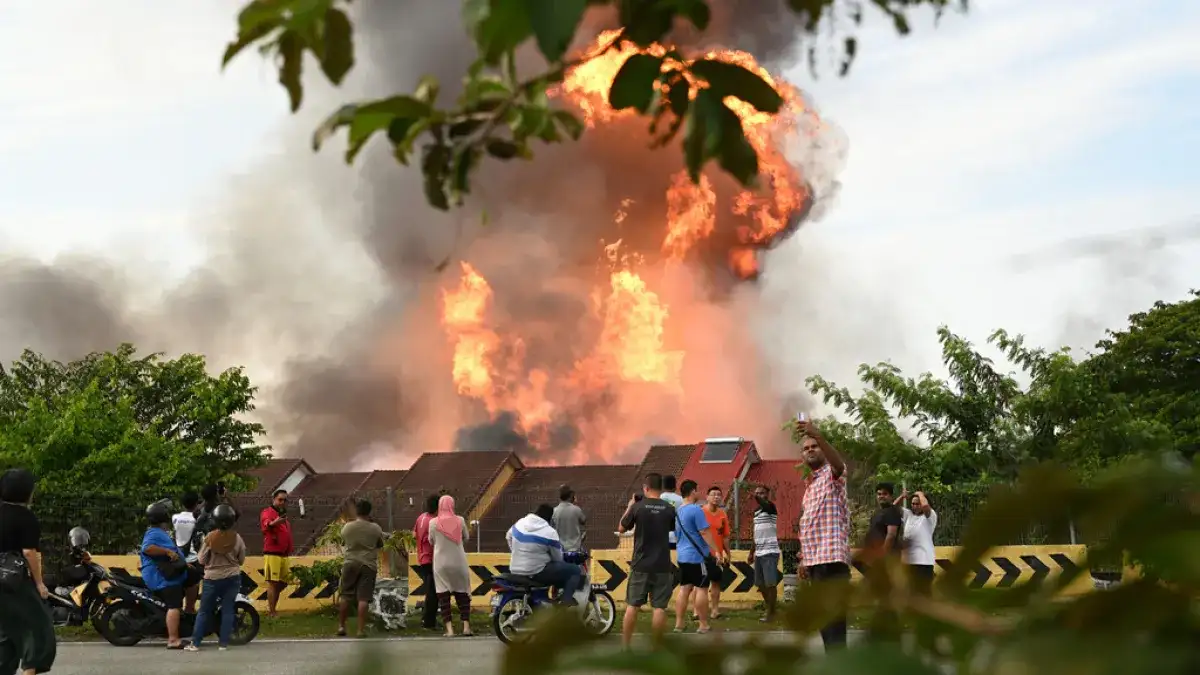A devastating gas pipeline explosion in Putra Heights, near Puchong in Selangor, Malaysia, has left residents reeling and raised urgent questions about the safety of the country’s aging infrastructure. The incident, which occurred on April 1, 2025, was caused by soil instability leading to a structural failure, according to a recently released investigation report. As communities grapple with the aftermath, concerns are mounting over the vulnerability of gas pipelines crisscrossing the peninsula, with residents and experts alike calling for comprehensive inspections and accountability.
Soil Instability at the Heart of the Disaster
The investigation into the Putra Heights fire, whose findings were announced on July 1, 2025, pinpointed soil instability as the primary cause of the pipeline rupture. Unstable ground conditions, possibly exacerbated by waterlogging, led to structural stress on the pipeline, ultimately causing a leak that ignited into a catastrophic explosion. The incident has displaced families, damaged properties, and left an indelible mark on the community.
Andy Fong, a resident affected by the disaster, expressed deep concern over the broader implications of the report. “We are now concerned for the safety of others who live close to gas pipelines in other parts of the country”. Fong highlighted the lack of clarity in the findings regarding whether inspections are being conducted on other sections of the pipeline network, which stretches across Peninsular Malaysia. “If weak soil conditions led to the pipeline suffering a structural failure, then it leaves the rest of the pipelines across the country vulnerable to such deterioration,” he added.
The pipeline in question, like many others in Malaysia, is over 30 years old, amplifying fears that similar incidents could occur elsewhere if underlying soil conditions are not adequately monitored. Fong’s worries underscore a pressing need for transparency and proactive measures to prevent future disasters.
Questions Over Monitoring Failures
Beyond the immediate cause of the explosion, residents have raised pointed questions about why monitoring systems failed to detect the pipeline’s movement or stress before the rupture. A homeowner identified only as Goh voiced her frustration over the apparent oversight. “I find it weird that none of the measurement systems they had picked up on any abnormalities as the pipeline moved repeatedly”. “Surely if the pipeline moved enough to form stress lines over a period of time, the gas pressure must have changed at least slightly and have been detected.”
Goh’s concerns reflect a broader unease among those living near gas pipelines about the reliability of safety mechanisms designed to prevent such tragedies. The lack of early detection has fueled skepticism about the effectiveness of current infrastructure oversight, with many wondering whether adequate technology or protocols are in place to identify risks before they escalate into disasters.
Unanswered Questions and Legal Action
For some residents, the investigation report has provided little closure, failing to address critical details about accountability and the root causes of the soil instability. Norshahrizan Rosli, a 39-year-old father of three, expressed frustration over the lack of explanation regarding how the ground beneath the pipeline became waterlogged. “From the many years I lived here, I never once saw water stagnating above the area where the pipeline is, and the report doesn’t explain how the soil became so soft and wet”. “It was all a technical explanation without any hint about who is at fault even after all these months.”
Rosli, along with other affected residents, is now considering legal action, using the report as evidence to seek answers and compensation. “I just want answers about who is at fault so we can take legal action,” he said. The absence of clear accountability in the findings has left victims feeling abandoned, with many determined to hold responsible parties to account through the courts.
Living in Fear as Repairs Continue
As efforts to restore the damaged pipeline proceed, residents like Dr. Muhammad Azam Mokhtar, a 36-year-old father of two, are left grappling with fear and uncertainty. Mokhtar, whose home is near the site of ongoing repairs, criticized the lack of safety guarantees or information about monitoring measures in the wake of the disaster. “It’s worrying to know that it was caused by the land itself, especially since they did not provide any information about safety guarantees, safety measures taken, or whether there would at least be regular monitoring of the soil”
Mokhtar also questioned the initial planning and due diligence behind the pipeline’s construction decades ago. “It feels like whoever built the pipeline did not do their due diligence on soil conditions to ensure the pipeline would be secure over time, and they are still continuing to rebuild it,” he said. With repair work, including the construction of a new valve, taking place near his neighbor’s house, Mokhtar and his family feel trapped in a state of constant anxiety. “We residents who are still living here have been left hanging without any conclusion or plan while we live at risk, but my family has nowhere else to go,” he added.
Broader Implications for Malaysia’s Infrastructure
The Putra Heights explosion has cast a harsh spotlight on the state of Malaysia’s aging gas pipeline network, much of which was installed in the late 20th century during a period of rapid industrialization. While natural gas remains a critical energy source for the country, powering homes and industries, the incident has exposed potential vulnerabilities in infrastructure that has not been comprehensively updated or inspected in decades.
Experts warn that soil instability, often caused by factors such as heavy rainfall, urbanization, or inadequate drainage systems, could pose risks to pipelines in other regions of Malaysia. The peninsula’s diverse geological conditions, ranging from soft alluvial soils to hilly terrains, complicate efforts to ensure uniform safety standards across the network. Without systematic assessments of soil conditions and pipeline integrity, similar disasters may remain a latent threat.
The financial cost of such incidents is also significant. While exact figures for the Putra Heights disaster have not been disclosed, the damage to property and the expense of repairs are likely to run into millions of Malaysian Ringgit (MYR). For context, a comparable pipeline repair project in another region last year cost approximately 3.5 million MYR (~US$750,000, based on exchange rates as of July 1, 2025). Beyond monetary costs, the human toll—displacement, trauma, and loss of trust in public safety systems—cannot be overstated.
Calls for Reform and Oversight
In the wake of the investigation’s findings, there is growing pressure on Malaysian authorities and utility companies to implement stricter oversight of critical infrastructure. Residents and advocacy groups are urging the government to mandate regular inspections of gas pipelines, particularly in areas prone to soil instability or environmental changes. Proposals include the deployment of advanced monitoring technologies, such as pressure sensors and ground-penetrating radar, to detect anomalies before they lead to catastrophic failures.
Public trust in the entities responsible for maintaining gas pipelines has been severely eroded by the Putra Heights incident. Transparency will be key to rebuilding confidence, with many calling for detailed public reports on the condition of the national pipeline network and timelines for necessary upgrades. Without such measures, the fear of another disaster looms large for communities across Malaysia.
A Community on Edge
The Putra Heights gas pipeline explosion is more than a isolated tragedy; it is a stark reminder of the risks embedded in aging infrastructure and the consequences of oversight failures. For residents like Andy Fong, Goh, Norshahrizan Rosli, and Dr. Muhammad Azam Mokhtar, the incident has upended their lives, leaving them with lingering fears and unanswered questions. As repair work continues and legal battles loom, the affected community remains on edge, hoping for answers and assurances that such a disaster will not strike again.
As Malaysia confronts the broader implications of this incident, the path forward remains uncertain. Will the government and utility providers take decisive action to safeguard the nation’s gas pipeline network, or will bureaucratic inertia and cost concerns delay critical reforms? For now, the residents of Putra Heights—and countless others living near pipelines across the peninsula—can only wait and watch, their safety hanging in the balance.
















